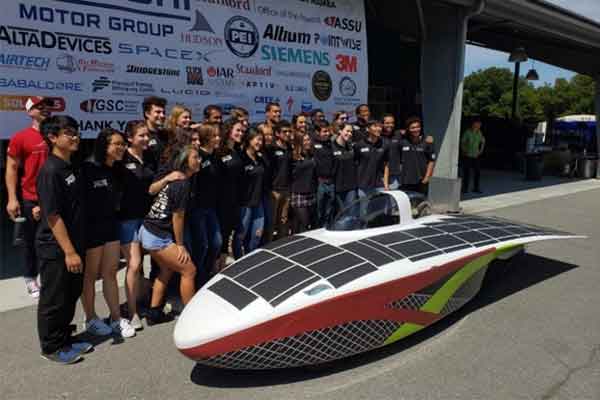- The Stanford Solar Car will compete in this month’s Bridgestone World Solar Challenge (BWSC) race.
- It will be powered by Alta Devices solar technology.
- This will be the first time a solar car will use flexible, glass-free solar.
California — When the Stanford Solar Car competes in this month’s Bridgestone World Solar Challenge (BWSC) race, the car will be powered by Alta Devices solar technology.
This year, for the first time in BWSC history, a solar car will use flexible, glass-free solar that also delivers high levels of power, and can also be manufactured at cost-effective prices. Not only is this a big step for the team, the race, and Alta Devices, but it provides a vision of what solar technology might look like for mass-market automotive.
“For solar to be realistic for the broad auto market, it needs to have several important characteristics,” said Jian Ding, Alta Devices CEO. “It must be flexible enough to conform to the surfaces of innovative vehicle designs, maintain high efficiency even in the hottest weather conditions, and be manufacturable at scale.”
To date, solar technology used on solar race cars, luxury cars, or concept vehicles has typically been silicon solar or specialized solar developed for space applications. Silicon solar, while low-cost, is very brittle, which makes it difficult to handle and integrate into curved automotive surfaces.
Silicon has relatively low energy conversion efficiency compared with other materials, making it harder to generate the desired amount of power from the limited area of a car roof. Moreover, silicon solar quickly becomes warm during operation and loses efficiency as temperatures rise.
Overall, this results in less vehicle range or available power per day. Space solar cells are high efficiency, but like silicon, very brittle and don’t manage heat well. In addition, the traditional complex and time-consuming manufacturing process makes them very expensive.
Alta Devices thin-film gallium arsenide solar technology is a newer technology relative to silicon and space solar. It is flexible, lightweight, high-efficiency, and has structural properties that allow it to run much cooler. It can also be produced at mass-market scale.
















Comments